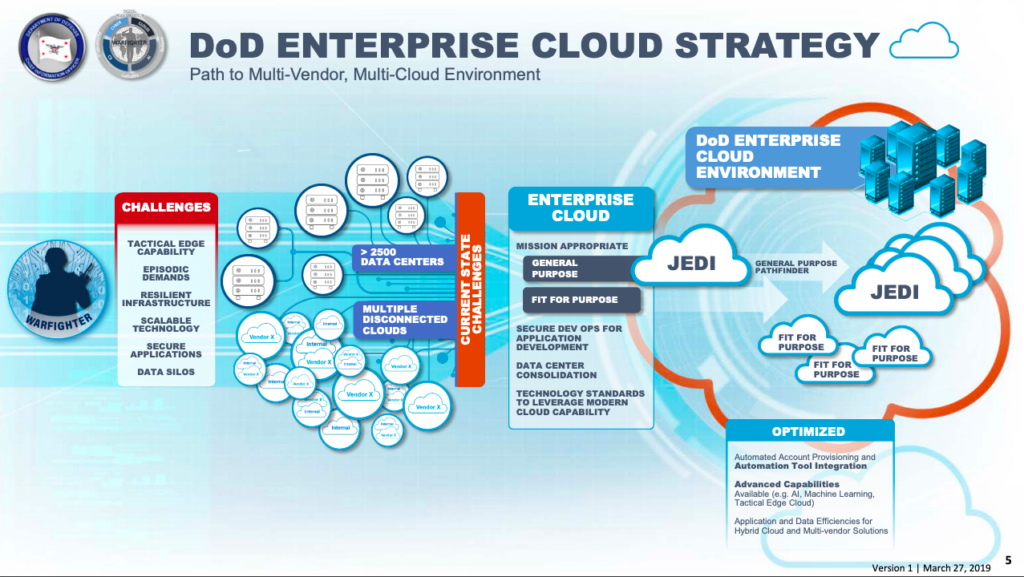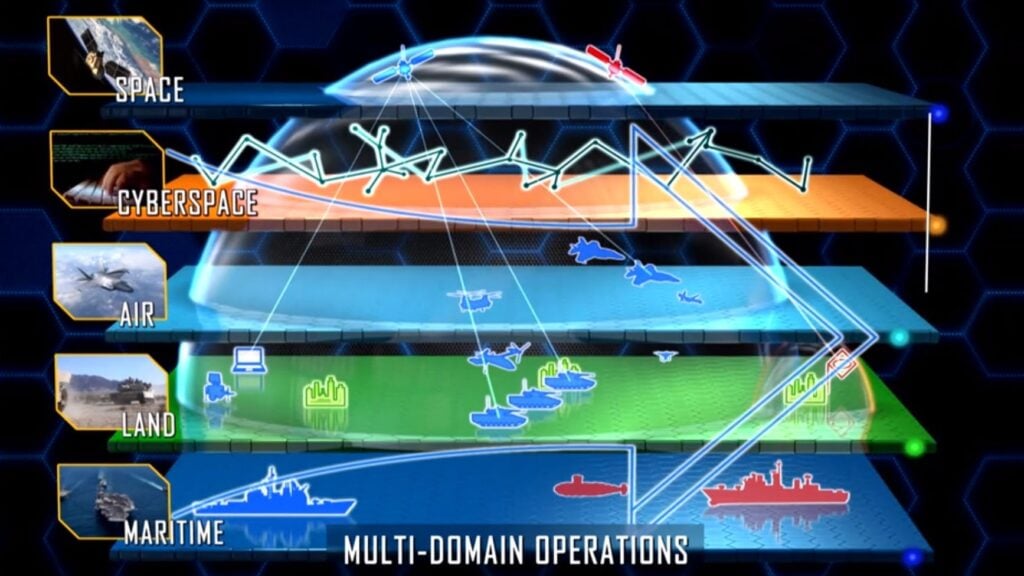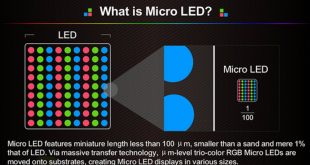Broadly speaking, cloud computing refers to the practice of remotely storing and accessing information and software programs on demand, instead of storing data on a computer’s hard drive or accessing it through an organization’s intranet. This practice relies on a cloud infrastructure, a collection of hardware and software that may include components such as servers and a network. Cloud infrastructure can be deployed privately to a select user group, publicly through subscription-based commercial services available to the general public, or through hybrid deployments that combine aspects of both private and public cloud infrastructure.
Cloud computing’s importance has grown significantly in recent years providing great technical and economic advantages. It has enabled the use of shared IT infrastructure and services to create a flexible, scalable, and on-demand IT environment as well as reducing costs. Cloud is now the dominant model for delivering and maintaining enterprise IT resources, including hardware, software and platforms and tools for application developers.
Defense organizations started building their cloud computing infrastructure almost a decade ago, with the US forces being at the forefront of the modernization effort. In September 2017, the Deputy Secretary of Defense issued a memorandum calling for the accelerated adoption of a Department of Defense (DOD) enterprise-wide cloud services solution as a fundamental component of ongoing DOD modernization efforts. As a component of this effort, DOD sought to acquire a cloud services solution accessible to the entirety of the Department that can support Unclassified, Secret, and Top Secret requirements, focusing on commercially available cloud service solutions, through the Joint Enterprise Defense Infrastructure (JEDI) Cloud acquisition program.

“Cloud computing will increase capabilities and responsiveness of the operating force and unified action partner (UAPs) globally during all joint operational phases (Shape, Deter, Seize Initiative, Dominate, Stabilize, Enable Civil Authority), whether they are preparing to deploy in the installation IT environment, en route or engaged as part of a Joint force in a theater of operations,” says Army’s cloud computing strategy. Cloud infrastructure, people and processes will be central to enabling the JIE.
Data are now becoming available both to combat and non-combat organizations within a military structure. Cloud in defense is a revolution in military affairs that will transform the battlefield by effectively interconnecting current and future systems, leading to jointness, as well as information and decision-making superiority. Another attractive point of the cloud is its ability to enable a mobile workforce, which brings enhanced flexibility and efficiency. But cloud computing systems also provide attackers with new opportunities and can amplify the ability of the attacker to compromise the computing infrastructure.
Cloud computing Challenges for battlefield
However, there are several challenges to using the cloud on a tactical battlefield, where reliable network connectivity is never a sure thing. These include limited bandwidth, long network downtime, satisfying Mission-driven goals, and heterogenous data sources. Some applications are unique to tactical environments such as Target Tracking and Localization (TTL) and Persistent Surveillance. They often come with stringent delay requirements and involve real-time or near real-time objectives.
That will mean more adoption of technologies that can securely store and forward data to and from the battlefield whenever communications are available, letting warfighters leverage big data analytics and hyperscale computing from wherever they are.
However in battlefield scenario, applications have different levels of complexity and deadlines in terms of time-to-solution. (2) Environmental constraints may limit the connectivity of computational resources and, thus, the number of accessible cloudlets. (3) Mobile electronic devices are necessarily resource-poor relative to static client and server hardware.
Modern soldiers carry hand held devices for various tasks such as speech and image recognition, natural language processing, decision-making and mission planning. Three challenges, however, present obstacles to achieving these capabilities. The first challenge is that mobile devices offer less computational power than a conventional desktop or server computer. A second challenge is that computation-intensive tasks, such as image recognition or even global positioning system (GPS), take a heavy toll on battery power. The third challenge is dealing with unreliable networks and bandwidth. Cloud computing can provide cloudlets, which are localized, lightweight servers running one or more virtual machines (VMs) on which soldiers can offload expensive computations from their handheld mobile devices, thereby providing greater processing capacity and helping conserve battery power
Currently the challenge is to support the integration of systems and platforms on cloud, to improve the exchange of data among them. Major military forces are going through that process and tests are being carried out to validate the new tactics. It is expected that soon those capabilities will be adopted by more military forces and that is something that will be supported by defense organizations such as NATO.
Then there is significant challenge regarding security. The more endpoints being used to collect and send data to the edge, the larger the potential attack surface and the greater the risk a bad actor will be able to access military networks.
US Army’s Cloud Computing
The Army’s efforts to leverage the tactical cloud to process data on the edge will get information into soldiers’ hands more quickly, allowing them to make decisions in near-real time. This could influence the course of combat and save lives. “If you know your enemy and know yourself,” the legendary Chinese general Sun-Tzu wrote in the sixth century B.C., “you need not fear the outcome of one hundred battles.” In 2020, the US Army is finding that a new technology, cloud computing, is essential to both kinds of knowledge.
“A lot of the work that we’re doing right now [with cloud] is really giving us the ability to see ourselves more clearly,” Brig. Gen. Martin Klein, head of Strategic Operations for the Army’s Pentagon headquarters staff, told reporters last week. “When we’re mobilizing our reserve components, as we’ve done over the course of the last couple of months in the COVID-19 crisis, we’re actually able to see units move more clearly through the alert, mobilization, and deploy phases.” There’s even a virtual “commander’s dashboard,” known as Vantage, to make it easy for senior officers – who are rarely tech geeks – to access the unit-status data now on the cloud, he said.
At the same time, on the know-your-enemy side, Klein said, the service’s Project Convergence experiments are exploring ways to move targeting data from a host of sensors – many of them operated by the Air Force and nascent Space Force – through the new tactical network the Army is developing to the new long-range missile launchers and missile defense systems now in testing. The seamless, real-time flow of data across land, sea, air, space, and cyberspace is central to the emerging combat concept called Joint All-Domain Operations.

“There’s a large effort underway, through what we call a data migration/cloud development strategy,” Brig. Gen. Martin Klein, head of Strategic Operations for the Army’s Pentagon headquarters staff said. “The Army’s data is stored is primarily stored through four different locations, [including] the warfighting mission area that I own.” But those disparate systems weren’t built to easily exchange data with each other – hence the need to migrate data to the cloud.
“We’ve invested heavily in the in these large data centers, these repositories … of data that wasn’t necessarily exposed to the community of interest,” neither in the acquisition world developing new weapons, nor in the operational world employing them, Klein said. “We have found that by using cloud abstraction layers” – which handle the wonky technical details out of sight of the user – “that we’re actually able to communicate more effectively.” “We make sure that we have common data standards, that we have common architectures to make our data available… and accessible throughout the community of interest, not only within the Army,” Klein said.
“Army Futures Command is also leveraging the cloud to great effect for the sensor-to-shooter work that we’re doing,” Klein said. “We’ve found over the course of the last six months in particular — since I’ve been here — how important the cloud is to doing that.”
“We’re actually working with multiple cloud service providers,” he said. “So we’re trying to build cloud-agnostic software, if you will, that can lift into different cloud service provider environments.” Those common tools will often require some tweaking to function in any particular vendor’s cloud, Klein acknowledged, but it’s a lot less effort than tying yourself to one provider and having to reinvent the wheel to use anyone else. “We know, as we go from a Microsoft Azure or an AWS, or even a Google for that matter, that there’s going to be slight variation,” he said, “[but] using these cloud agnostic tools, we are much better off than just trying to go with one system.”
Klein says the Army’s common tools should translate just fine to the Defense Department’s much-delayed Joint Enterprise Defense Infrastructure (JEDI) cloud, when and if that emerges from its ongoing legal battles. “We’re very excited, you know, to see some kind of a DoD enterprise cloud, whatever form factor that comes in,” he said. “We know those decisions are being made right now. But in the meantime, we’ll leverage the commercial cloud service providers in order to do what we need to do.”
US Navy tactical cloud
The US Navy has lately been focused on a concept called “distributed lethality,” or equipping even their smallest ships with powerful, stealthy, and long range missiles that can sink enemy ships or signal emitters from a safe distance. To support this concept US Navy is is deploying a “tactical cloud” network that will tie together targeting data acquired from a range of sources in the sea, sky and space to form a lethal “kill web,” the U.S. Naval Institute reported. The network will essentially allow any aircraft, ship or submarine to draw targeting information from any other instrument in the cloud and extend their own range when launching weapons against surface targets.
This will also allow the ships, bases, and radar sites to create an all inclusive picture that draws on info from submerged vessels all the way up to space assets. “We call it the tactical cloud,” Rear Admiral Mark Darrah, who heads up the the Navy’s Strike Weapons and Unmanned Aviation program said at this year’s Sea-Air-Space Exposition. “We’re going to put data up in the cloud and users are going to go grab it and use it as a contributor to a targeting solution.”
The U.S. Navy is preparing large-scale investments in ship-mounted cloud computing infrastructure as the backbone of its future strategy for network-centric naval warfare. Naval Sea Systems Command (NAVSEA) is seeking input from industry on a plan to migrate its current systems and data to a shared, decentralized cloud computing environment, according to an August 2020 request for information. The plan will involve installing tactical edge computing infrastructure, which resembles a miniaturized data center, aboard its fleet of aircraft carriers, amphibious ships, and other vessels. This will allow the U.S. fleet to run data-rich applications far from U.S. shores and independently of a central network.
These systems will underpin NAVSEA’s Future Integrated Combat System (FICS), which will begin fielding starting in fiscal 2023, according to the RFI. Navy officials released two separate solicitations for the proposed contract, one under NAICS code 541512 seeking out IT systems integrators, and another under NAICS code 334511 for manufacturers of nautical navigation systems. This hints that the desired system may require extensive collaboration between commercial cloud providers and traditional defense contractors like Lockheed Martin Corp., Raytheon Technologies Corp., and Northrop Grumman Corp., as the top producers of electronics systems for the Navy.
Currently, NAVSEA relies on a number of combat systems in its fleet, including the AEGIS Weapon System, on which the Navy spends about $1 billion a year to operate and maintain. FICS would represent a single system that could operate on a number of different classes of ships, reducing the burden to train sailors on multiple systems. The FICS system will also make it easier for Navy personnel to upgrade software on a continuous basis and swap in the newest hardware as soon as it’s available. In contrast, upgrading existing systems often requires opening up the hull of a ship, a costly and time-intensive process.
The contract calls for establishing a “hardware factory” model for rapidly developing and manufacturing the kinds of custom computing and storage equipment required to run a cloud environment aboard a ship thousands of miles offshore. The concept mirrors the “factory” or “pipeline” approaches that many modern organizations use to develop software. The conveyor belt-like process entails iterative development, rigorous product testing, and continuous design improvements based on user feedback.
The Office of Naval Research had sanctioned a five year, $12.3 million, and “Naval Tactical cloud” (NTC) project to harness the power of cloud computing for the warfighting environment. NTC ecosystem shall support integrated fires and for planning and conduct of expeditionary missions. The research would be focused on Naval Data Science, analytics and decision tool development. It wants to develop applications and widgets that provide enhanced command and control capabilities. Research conducted under the new project will focus on the use of cloud to support Marine Corps amphibious operations, including supporting Navy’s ships and marine special operations forces.
The idea of deploying miniaturized cloud servers at the tactical edge aboard ships, on aircraft, and even in soldiers’ backpacks, represents a key objective for the Pentagon’s Joint Enterprise Defense Infrastructure (JEDI) cloud program. The FICS RFI would appear to fall within JEDI’s scope.
Tactical Cloud Reference Implementation, or TCRI
Work on the Tactical Cloud Reference Implementation (TCRI) is underway at the Army, the Air Force, the Navy, and the Defense Threat Reduction Agency. Once it is completed, the TCRI will interface with a large number of defense intelligence, surveillance, and reconnaissance (ISR) sensor systems to deliver a unified operational intel picture that enables data-based decision making in both connected and disconnected environments.
The Kill Chain Integration Branch here has begun an experimentation campaign “Data-to-Decisions” to look at ways to provide warfighters data in the fastest and most efficient ways possible. “Currently, once data is gathered, it’s sent back for data processing and analysis,” said Capt. Elizabeth Simkus, the Data-to-Decisions lead engineer. “It could take a while before that information gets back to a warfighter; we’re working to make that a more immediate result.”
The projects under this campaign are all part of a larger effort referred to as “combat cloud,” which aims to bridge the gap between different types of data and how that data is communicated across multiple platforms. The model adopts a hybrid approach, consisting of multiple models in which data is processed, stored and communicated in a dynamic, distributed environment.
“Our network model is very challenging to solve because it has to account for the ever-changing air and ground environment in order to be fully integrated and optimized for data correlation,” she said.“This, in turn, will help to enable faster and more efficient decision making in a wartime environment,” said Capt. Brenton Byrd-Fulbright, the Data-to-Decisions program manager.
“One project the team is looking at is called the Tactical Cloud Reference Implementation, or TCRI.” TCRI is a software platform, which will provide a common framework to manage operational data while also performing analysis on this data through the use of automated, mathematical algorithms and analytics. “It’s basically putting the architecture (in place) for the combat cloud,” Simkus said.
Essentially, the concept is similar to how people utilize clouds to sync different data on their numerous smart devices such as tablets and smartphones. The difference is TCRI will largely function automatically, with little user input, and will only provide information that the user designates as relevant.”
The TCRI program is a joint program being worked on by the Air Force, Army, Defense Threat Reduction Agency and the Navy. Although originally led by the Navy, the Air Force will be sharing the lead role as future development progresses. Simkus said the team here is constantly looking at and leveraging the versions that are being released by the other organizations.
This past July, the team used the Hanscom Collaboration and Innovation Center (HCIC) to conduct an experiment with TCRI. In the experiment, the team collaborated with a local company, Avwatch, to demonstrate a new proof of concept: the ability to use a cloud to share data from a plane to a processing node on the ground. The team utilized an airborne TCRI laptop to ingest imagery taken by the aircraft camera and passed the imagery down to the HCIC. Along with this, the TCRI laptop on the aircraft also ingested GPS data from the plane’s location as it was taking images and passed this information as well.
Byrd-Fulbright said the result was a live update of the aircraft’s current and historical position or “airtrack” as it took the images, along with the actual images overlaid on a visual interface. “The importance of this is that this concept can be utilized to help optimize imagery collection and data dissemination on an airborne platform via the cloud’s ability to sync data with other relevant information from other sources,” he said. The team is planning another experiment, using the HCIC, where they connect to multiple nodes, this time passing along not just information, but utilizing analytics to automatically identify specific objects, as well as anomalies that may be missed or hard to detect with the human eye.
References and Resources also include:
https://www.engadget.com/2016/05/19/us-navy-tactical-cloud-network-kill-web/
https://breakingdefense.com/2020/07/army-future-ops-depend-on-cloud-but-not-on-jedi/
https://about.bgov.com/news/navy-to-build-ship-based-edge-cloud-for-future-combat-system/
 International Defense Security & Technology Your trusted Source for News, Research and Analysis
International Defense Security & Technology Your trusted Source for News, Research and Analysis

